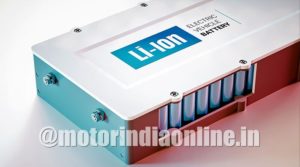By S. Ramachandra, Managing Partner, Littler Associates
EV adoption
The principal arguments in favour of EVs rest on two objectives-
- The need to reduce vehicular emissions that are responsible for air pollution, and
- Reducing India’s dependence on imports of petroleum products
EVs ensure greater energy efficiency given the limited efficiency of IC engines. With vastly fewer moving parts, EVs will usher in a revolution in mobility and transportation, making roads quieter, less polluted and with much lower requirements for periodic servicing and maintenance.
Coming to reduction in air pollution, the fact remains that vehicular emissions are responsible for air pollution in cities, and the solution to reduction in emissions would be better served by larger investments in public transportation that would cut the need for use of personal mobility vehicles. Also, conversion of internal combustion engine-driven vehicles to electric would only serve to displace the emissions to the stack head at power plants given that 80% of India’s energy needs are met by thermal power. Of course, it is probably correct that the energy efficiency of large-scale power plants is superior to that of IC engines and therefore there would be an overall reduction in emissions by effecting this shift of ICE-powered vehicles to electric.
So, there is probably some advantage to be had in converting automobiles to electric traction as opposed to IC engines. However, the advantage may not be as significant as is made out to be and is probably better served by technology routes other than a rapid transition to pure EVs.
Powering charging points for EVs that will require uninterrupted supply of power might push people to power these with back-up diesel generators that would add to emissions also.
Petroleum products imports
In respect of imports of petroleum products, the current EVs use Li-ion batteries as the standard storage technology. As has been indicated earlier, both Lithium and Cobalt (an essential element to prevent thermal runaway of the cells) are scarce minerals not available in India. India does not enjoy a competitive advantage in sourcing the raw materials, the components (electrodes, electrolyte, separators, etc.), or in any of the electronic components that are essential for the battery pack. Even electronic components required for the battery management system are sourced ex-Taiwan that has developed expertise in their manufacture.
While in the case of petroleum products, the overall dependence on imports is about 80%. Even if we were to develop expertise for pack assembly in the country, our import dependence will not shrink substantially. In fact , it may worsen.
Issues with Lithium-ion technology
Li-ion cells, due to their superior specific energy, higher energy density and quick recharge capability, enjoy certain advantages of lead-acid that has been the dominant technology for storage batteries for over a century. As opposed to specific energy at a pack level of 35-40 watthour/ kg for lead acid, Li-ion (LFP chemistry) delivers 140 watthour/ kg while NMC chemistry that is the popular standard today delivers about 220 watthour/ kg.
However, Li-ion also suffers from the following significant disadvantages:
* High cost of about $ 220/ watt hour at pack level although is projected to drop to < $100/ watt hour
* Risk of combustion due to use of flammable electrolyte
* Inability to charge at high rates if ambient conditions of temperature are either below 0 deg C or above 40 deg C. In India, the limitation on charging at higher temperatures is a serious drawback
* Need for a relatively sophisticated battery management system (BMS) to manage the cells
Issues in manufacture of Lithium ion cells
* At this time, large players like Panasonic, LG, Samsung, CATL, BYD, Tesla, etc., have set up giga-factories for manufacture of Li-ion cells, and given the lead they enjoy, with their economies of scale, it will be difficult for India to develop significant competitive advantage in the manufacture of these cells.
* At present, the supply chain for the raw materials for Li-ion cells is uncertain since the sources for Lithium salts and Cobalt are limited, as is well known. Once the market for these cells grows, the prices of the raw materials might also rise. This might impact viability.
* Li-ion batteries require provision of a battery management system to ensure proper thermal and electrical management of the cells. These BMS devices require electronic components of reasonable integrity to ensure the devices work well. There is a major risk of poor-quality components entering the supply chain and also the risk of poor assembly unless we achieve a fair degree of maturity in manufacture of these.
* Larger-sized (+5Kwhr) battery packs will require a reasonably sophisticated cooling system that has to work to ensure control of battery temperature and to prevent spontaneous combustion of the pack. India will need to develop a certain degree of maturity in design and manufacture of these too.
* As of now, there are no proven environmentally safe ways for recycling Lithium ion cells or battery packs. This is in stark comparison to lead-acid where over 95-99% of the batteries are safely recycled today.
Challenges in use of Lithium ion technology in EVs
Aside of the commercial viability of EV battery packs and the feasibility of manufacture in India, there is also the need to counter a few challenges as under-
* Since Li-ion cells (in their current avtar) are sensitive to temperature, this poses challenges of ensuring fast enough charging in summer when ambient temperatures are high. Climate-controlled charging stations are a solution that some have proposed, but then this adds to the cost of the solution.
* Development of a suitably-priced solution for EV battery packs for smaller cars and two/ three wheelers is still some distance away. We are not at the stage where we can guarantee a robust low-cost solution for 2-3 wheelers or small cars.
* EVs will require development of a widespread charging network to ensure that EV batteries can be recharged when required. At this time with about 58K gasoline/ diesel/ CNG stations round the country, we would need a number of charging points to to develop huge infrastructure for this.
* As any other chemistry, Li-ion performance also degrades with rise in temperature, and this would mean that users might not experience the cycle life that is quoted or promised. Experience with Li-ion powered EVs has been mixed with range anxiety still not addressed in a satisfactory manner.
Risks of use of Lithium ion battery packs in EVs-
* With the current state of technology, Li-ion battery packs are susceptible to spontaneous combustion due to puncture or ingress of water, given the extreme reactivity of Lithium as well as the presence of an organic electrolyte.
* This can also happen if battery packs are not charged with chargers of proper specifications. This risk of combustion is evident from the cases of fire reported in China and Singapore when personal mobility devices have been left for charging unsupervised. This has even resulted in a few deaths.
Government policy
* The Union Government has taken some major policy decisions to drive EV adoption:
– In the Finance Budget for fiscal year 19-20, the Government has put in place fiscal incentives for EVs/ EV components/ capital equipment. These included lowered GST for EVs of 5%, zero-rating of customs duty for Li-ion cells and capital equipment for the manufacture of these cells as well as for charging technology.
– NITI Aayog has announced an objective for conversion of all 3-wheelers to electric by 2023 as also all 2-wheelers below 150cc capacity to electric by 2025.
– Many departments of the Central and some State Governments have announced initiatives to procure only EVs for their use as well as in some cases for public transportation (buses).
* While the broad thrust of the policy measures in respect of EV adoption are valid, the policies in respect of Li-ion are akin to the Government selecting the winner in battery technology, while there are parallel developments by labs in developing other chemistries that could offer greater benefits with fewer challenges and risks.
* Further, the automotive industry has invested a considerable sum to upgrade the technologies to BS-VI to meet the enhanced emissions norms effective April 2020. The dramatic pronouncement of a ban on IC engine-operated 3-wheelers and low capacity 2-wheelers from 2023 and 2025 respectively have caused considerable uncertainty. This has led to a cutback on investment by the automotive sector. This sector also comprises automotive and 2w dealerships, service stations and garages as well as a large number of component manufacturers with their tier-2/ tier-3 suppliers and aftermarket trade channel partners. All of these entities and would have the livelihood of persons engaged in the same impacted in an adverse manner by this abrupt shift.
* The cost at which EVs would be available at this time even with fiscal incentives is not likely to be affordable for the average consumer, and this would both hit demand and reduce mobility options.
The way forward
While adoption of EVs is a desirable goal given the essential advantages in reduction of emissions and higher energy efficiency of the powertrain, policy objectives must be guided by the following:
* Be technology neutral in respect of battery technology
* Permit customer choice in respect of the configuration that will best suit their needs and affordability
* Encourage innovation in industry to meet the goals of reduction in emissions and enable reduced dependence on import of fossil fuels for transportation needs
* Enable mass transportation at economical rates without imposing onerous conditions
* Avoid abrupt disruption of the automotive sector and associated ecosystem that would have a catastrophic effect on the economy
Given these, a mix of policies and initiatives as under would serve the main purpose best:
– Gradual enhancement of emission standards that would encourage development of start-stop technologies, shift to hybrids and EVs in a phased manner.
– Fiscal incentives linked to reduced emissions that would encourage the above.
– Investment in public transportation.
– Conversion of public road transport to electric in the first phase as this would yield the highest advantage in terms of average reduction in emissions per passenger km.
– Encourage the industry to explore various alternative chemistries by supporting research and engineering centres for the same.

